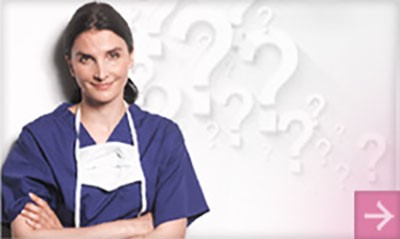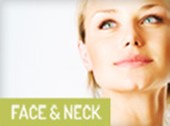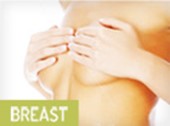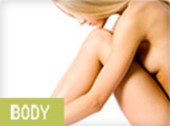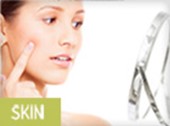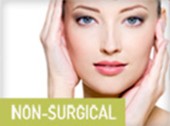Non-Surgical Aesthetic Medicine
My Approach to facial rejuvenation: More than just a facelift
My approach to every new patient who desires facial rejuvenation is to obtain a full history from the patient and to examine the patient's face carefully. Aspects that I want to know about include what it is that you see as being the main problem(s) with your face or the elements you do not like. This allows me to fit the treatment according to what you see as your main area of concern. In addition I also want to know:
- your age
- your weight and height (including weight fluctuations over time)
- the work that you do, your interests and hobbies
- your general state of health, including your medical, surgical and psychiatric history
- whether you have any chronic medical problems (heart problems, high blood pressure, peripheral vascular disease, stroke, diabetes mellitus, lung problems, emphysema, chronic obstructive airway disease, asthma, bleeding or bruising problems, epilepsy, neurological problems, psychiatric problems or previous problems, arthritis, porphyria or any other chronic medical ailments)
- previous surgery or hospitalisations you might have had: cosmetic surgery and non cosmetic surgery
- chronic medication you regularly take: oral contraceptive pill or hormone replacement therapy, aspirin, blood pressure treatment, insulin or other treatment for diabetes, etc.
- if you suffer from drug or medication allergies
- whether you smoke, ever smoked, how many per day, when you gave up, are you on nicotine replacement products such as the patch, gum or spray?
- regular exercise that you do
- state of your relationships
- your motivation for surgery
When I examine your face I first look at your overall appearance, expression and elements that seem to age your face or to be out of kilter with the rest. I watch you carefully as you talk to me as this gives me a good idea of which areas may need attention. I then examine the face area by area and tissue by tissue. Digital photographs are taken and serve as part of the pre-operative record. I usually put these photographs up on the computer screen and together with you a comprehensive treatment plan is formulated which is tailored to your specific situation and requirements.
Forehead
Forehead problems may be:
- Deep transverse forehead lines
- Horizontal and/or vertical frown lines
- Drooped brows or poor brow shape
Deep transverse forehead lines are due to the action of a muscle, which runs from the scalp to the eyebrows (the frontalis muscle). Paralysing the muscle with Botox prevents these lines from getting worse, and for the period during which the muscle is not working, the lines start to fade. The lines can also be filled with a number of substances. Fat grafting is effective and can fill the line with your own tissue which has the advantages of being easily available, cheap and safe (no allergic reactions), but which usually requires a visit to theatre. I often perform fat grafting as part of my facial rejuvenations. Off the shelf products can be injected in the rooms, but as with fat grafting, may also need to be repeated for optimal effect. Resurfacing techniques can also improve the quality of the skin. I often use two or three of these methods in combination. These are minor procedures and some not even surgical. An open brow lift operation is a major procedure that leaves long scars and creates scalp numbness. It is best to begin with non-surgical treatments such as botox to keep you looking young for as long as possible. Surgical treatments may be offered when the non-surgical treatments are no longer giving you the look you want.
Horizontal or vertical frown lines (also called glabellar lines) are also due to muscle action and are very effectively eliminated with Botox injections. In addition, filler materials can be used and again I will often fat inject this area as part of my facial rejuvenations.
Drooped brows or poor brow shape is traditionally corrected with a brow lift operation. In women, the normal eyebrow position is just above the bony margin above the eye, while in men it is at this bony margin. Ageing and gravity cause the brows to droop that can give an angry or sad look. If mild then Botox can help to elevate the brow by weakening the muscles that pull it down. This is often the advised initial treatment. When more advanced,brow droop also causes an apparent excess of upper eyelid skin giving a tired or worn out appearance.
Botox is now no longer very effective and surgery may be needed. The traditional brow lift involves an incision from ear to ear across the top of the scalp or just at the hairline. This results in extensive scar, prolonged healing, sensory disturbances behind the scar, possible hair loss and other undesirable sequelae. Although still occasionally performed, most patients find this approach too aggressive. Endoscopic brow lift is currently popular, as it is minimally invasive surgery. It relies on cutting and removing the muscles that depress the brow, thus allowing the brow to elevate. This elevation is then held by means of screws or drill holes in the skull to which the forehead structures are sutured. This is currently the most commonly performed procedure. One can do a suture suspension brow lift or a limited open brow lift through smaller incisions. The procedure is performed under local anaesthesia with sedation if done in isolation. The operation takes about 1 hour and is usually done as day case surgery. Brow lift may be combined with other procedures such as facelift. Ancillary procedures may also be done at the same time, especially some form of resurfacing and/or Botox to improve wrinkles.
Post-operative recovery is quick, usually about a week. Swelling and bruising may persist for 2-3 weeks and a feeling of tightness even longer. Complications are rare, but include nerve damage (less than 1%) which if it occurs is usually transient.
Eyes, Eyelids and Crow’s Feet
Upper lids may be too baggy, puffy or have too much skin. Once the brows have been placed in the correct position, attention can be given to the upper lids. Upper lid surgery or upper blepharoplasty is one of the winner operations in plastic surgery: it is relatively simple and quick and gives a high degree of satisfaction to both patient and surgeon (surgeon satisfaction is important too!) Removal of excess skin and fat may be combined with other facial rejuvenation procedures or performed on its own under simple local anaesthesia.
Lower lids may have similar problems to uppers although lower lids are slightly trickier to treat. The reason for this is that the effect of gravity has to be taken into account and a lower lid droop or ectropion should be avoided. For this reason I believe that fillers or fat injections should be considered first, and only when they are no longer effective should a lower eyelid blepharoplasty be discussed. With a lower eyelid tuck surgery is relatively conservative skin removal, possibly fat removal either through a skin cut (conventional lower lid blepharoplasty), or through the back of the lower lid avoiding a skin cut altogether (transconjunctival blepharoplasty), and lower lid suspension. If transconjunctival fat removal is done, lower lid skin can be improved by resurfacing.
Tear troughs often appear on the aspect of the lower lid closest to the nose. These may be seen as dark rings under the eyes. The reason for their appearance with age is because the fat that was there has descended down the cheek (hence the nasolabial fold becomes heavier). Correction can again begin with non-surgical fillers and then move onto surgery if needed in the future. The surgery requires re-elevation of fat with a malar lift or replacement of fat with fat injections. A malar lift is a tricky operation that lifts the descended cheek fat. It does change the facial shape and can give "cheek bones" where before there were none.
Crow's feet or smile lines at the sides of the eyes appear because of the muscle action there. Smile hard or scrunch up your eyes and you deepen these lines. I find the best treatment for these lines is Botox, which effectively causes a temporary paralysis of the muscles for 4-6 months.
Cheek
Cheek lines may appear in front of the ear, in the mid-cheek or near the mouth. Often cheek lines will be associated with the development of jowls and a saggy neck. Correction is best attained with facelift. My style of facelift is relatively conservative with a cut extending from below the temple, down in front of the ear, around the ear lobe, up behind the ear and finally for a short distance backwards along the scalp. The skin is undermined, the underlying layer (the SMAS) tightened and lifted, the excess skin removed and the wounds closed with dissolving sutures. More information follows lower down.
Mouth
Patients may seek lip improvement to correct the signs of ageing or to alter the shape of their lips. Ageing, gravity and smoking lead to the development of lines around the mouth. With ageing the lips become thinner and droop. Thin lips may be plumped up with a number of filler materials. Lips that are too thick may be thinned by surgical excision of any excess. All procedures on the lips may be performed as day case surgery, under local anaesthesia and may be combined with other procedures. Wrinkles around the mouth are a common occurrence as one ages. These wrinkles can be effaced with resurfacing techniques such as chemical peels, laser, dermabrasion or needle abrasion, or the wrinkles can be filled with filler materials. For a number of reasons, I do not perform laser surgery. My preferred resurfacing technique is chemical peel. To fill out thin lips a number of filler materials may be used. These may be divided into autologous (if they are derived from your own body, e.g. fat, dermofat, scar, etc.) or non-autologous (collagen, hyaluronic acid). Fat injections are quick and simple to perform under local anaesthesia. Over correction is done initially, as there is unpredictable resorption of fat with time. On average, about 60% of the fat remains although this varies from patient to patient and procedure to procedure. Fat is usually harvested via a very small liposuction; the fat is separated and injected. The lips will remain swollen for approximately 2-3 weeks, but once the swelling settles, the new effect can be seen. Artificial filler materials such as collagen and hyaluronic acid are both natural body substances which have been bio-engineered and which are available in a pre-packed syringe for injection. This procedure can be performed in the rooms under local anaesthesia. Bruising, tenderness and discomfort can occur following injection, but this usually lasts less than three days. Following any lip procedure, there can be some degree of asymmetry. With all lip enhancement procedures some degree of loss of effect should be expected and touch ups may be required with time. A severely unhappy mouth can be corrected with a corner-plasty: an operation that removes a triangle of skin from the corners of the mouth and actually lifts the corners. It does create some degree of scarring. It must be remembered that the mouth region is not improved with a facelift at all, and this is why additional treatments are often needed here during facial surgery.
Chin
Chin creases and skin texture problems can be treated with resurfacing techniques and filler substances. A weak chin may require either a chin implant or actual breaking of the jawbone and sliding the chin forwards.
Neck
An aged neck may be due to skin excess and wrinkles, fat excess and muscle problems. With ageing, the muscles of the neck spread apart and can cause vertical bands - so called vertical platysma bands. Skin excess can be treated with facelift while fat excess responds well to liposuction. More subtle neck problems can be treated with sutures that bring the muscles together and suspend the neck skin to the bone behind the ear. This can create a more youthful appearance with a better (cervico-mental) angle between the lower jaw and the neck. This operation is usually performed under local anaesthesia as day case surgery and is usually combined with other procedures of the face or neck liposuction. Complications are as for neck liposuction, but recovery time is usually slightly shorter. A fat neck can be well treated with liposuction. The neck is one of the body areas which responds particularly well to liposuction. Not only will liposuction remove excess fat, but it can also restore or create a better jaw line and angle between the lower jaw and the neck (so called cervico-mental angle). Liposuction tightens skin by causing skin retraction (shrinkage). Also, by removing fat, the skin that is there has to cover a greater surface area and must stretch to do so. These effects advantageously lead to an enhancement of appearance. Neck liposuction is usually performed as day case surgery under local anaesthesia. The operation takes approximately one hour or less and may be combined with other facial or neck procedures. Incisions are small (less than 5 mm) and hidden in the region of the ear or under the chin. The wounds heal relatively quickly and well, and should leave an almost invisible scar. Bruising and swelling can last for up to three weeks and a pressure garment is recommended during this period. This is an elasticised headband that attaches with Velcro above. Complications are rare, but include nerve or skin damage as well as poor scarring.
Botox and Fillers
Mr Soldin performs Muscle relaxing injections with Botox to give a younger look with less wrinkles. He uses either Restylane or Fat Injections for volume restoration in the face. For facial peels Mr Soldin uses 25-30% TCA.
Botulinum Toxin Injections
(Botulinum toxin is commercially available as Botox® or Dysport®. However, these injections are commonly referred to as ‘Botox injections’ whichever product is actually used. This leaflet will therefore refer only to ‘Botox injections’).
Introduction
Wrinkles are part of the ageing process. They can be attributed to sun damage, effects of gravity and muscle contraction resulting from facial expressions such as frowning and laughing. Wrinkles due to the effects of gravity represent natural sagging of tissue with age and are generally only improved by surgical tightening procedures. Wrinkles caused by muscle contraction such as frown lines, forehead lines and crows’ feet, can be improved by Botox treatment. Botox can also be used to treat excessive sweating of the armpits and palms of the hands.
What is Botox?
Botox® and Dysport® are the trade names for Botulinum toxin, produced by bacteria called Clostridium botulinum. Several types of toxins have been identified, but type A, which is used commercially, is the most potent. Botox acts by blocking acetylcholine, a chemical that is responsible for transmitting electrical impulses that cause muscle contraction. This results in muscle paralysis. The resultant paralysis, however, is temporary, as the new growth of nerves will re-innervate the muscles. Botox was first used in 1978 to weaken over active muscles in the eye, followed by other neurological conditions such as dystonia and hemifacial spasm with good effects and little side effects. Botox was first use cosmetically in 1990, to reduce racial wrinkles arising from muscle contraction.
What can you expect at the time of your procedure?
Botox is injected directly into the muscles that cause the wrinkles, using a very small needle. Several injections are usually needed at specific sites, depending on the area treated. When used to treat excessive sweating in the armpits, Botox is injected into the axillary skin. Localised discomfort and bruises can occur, but no sedation or local anaesthesia is generally required. Normal activities can be resumed immediately.
What are the results?
Botox usually takes effect 3-5 days after injection, with maximum effect at about 1 to 2 weeks. The effects generally last for approximately 3-6 months. When injected into the muscles that are responsible for expression wrinkles, it gives the face a more relaxed and smoother appearance. Sometimes longer lasting effects (9-12 months) are seen after treatment of excessive sweating. When a gradual fading of treatment effect is noticed you may return to have another treatment.
What are the limitations?
Whilst Botox can be very effective in reducing wrinkles due to muscle contractions, it has no effect in reducing the fine lines on the face caused by sun damage, and lines due to sagging of facial skin. In those patients with very heavy lines, repeated treatments may be needed for maximum effect. Too frequent or excessive dosing of Botox may lead to patient’s resistance to treatment due to antibody formation and Botox treatment may exaggerate any facial asymmetry.
What are the contraindications for treatment?
The use of Botox is contraindicated in people with neuromuscular disorders such as myasthenia gravis, those who are taking certain muscle relaxants, antibiotics such as aminoglycosides, pregnant or breast feeding women, those with infection or inflammation at the proposed site of injections, and patients with bleeding disorders.
What are the risks?
No severe complications after cosmetic use of Botox have been reported in the literature. Very rarely excessive weakening of the target muscles and paresis of adjacent muscles can occur, resulting in facial weakness. This is self-limiting. When injecting above the eyebrows, upper eyelid ptosis or slight drooping may occur but only 1:100. This can be corrected with eye drops but will also improve as the effects of the Botox wears off.
Fillers
There are many different fillers on the market today. They can be divided up into permanent or temporary, autologous ( from your own body ) or synthetic ( created in a lab). Mr Soldin uses Restylane products ( lab produced hyaluronic acid ). He does not use permanent synthetic fillers as if there is a problem after injection, it is easy to help in the case of a temporary filler. If the result is one that you don't like, it is possible to inject hyalase into the area treated which will dissolve the filler. The down side of a temporary filler is that it does slowly resorb making the improvement a temporary one ( usually 12-18 months ).
If a permanent filler is used, and the effect is not pleasing, it can be much more difficult to help - permanent fillers cannot be dissolved and usually need to be removed surgically.
If once you have had a temporary filler ( Restylane ) injected and you like the improvement, a more permanent solution with Fat injections are an alternative. The main advantage here is that the fat has come from your own body and thus has no chance of rejection or strange reaction. The down side is that an operation in theatre is needed.

